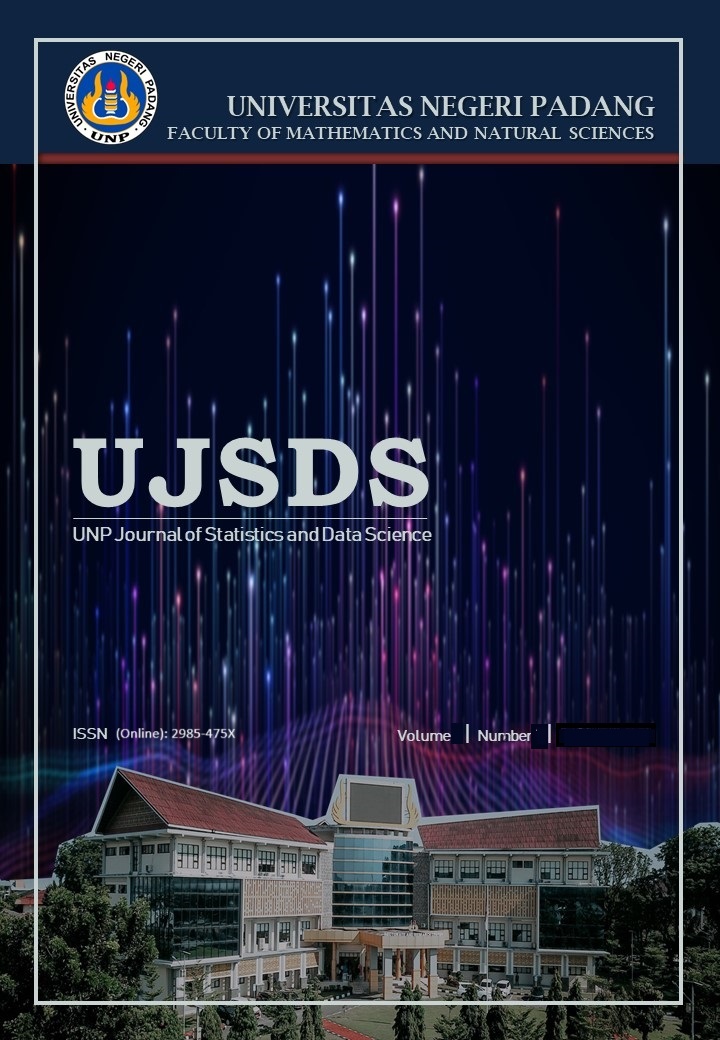Mortality Trends in Heart Failure Patients : A Study Using Cox Regression Models
Tren Mortalitas pada Pasien Gagal Jantung: Sebuah Studi Menggunakan Model Regresi Cox
DOI:
https://doi.org/10.24036/ujsds/vol3-iss2/359Keywords:
Cox Proportional Hazard Regression, Heart Failure, Science, Survival analysisAbstract
Heart failure is classified as a cardiovascular disease, which is the leading cause of death worldwide. In Indonesia, heart failure has a high mortality rate, which in 2019 became the second leading cause of death after stroke. One method that can be used to examine the factors affecting mortality in heart failure patients is the cox proportional hazards regression. Cox proportional hazards regression is one of the most commonly used methods for analyzing survival data to date. The study data consisted of 299 observations involving 5 predictor variables, such as age, serum creatinine, serum sodium, high blood pressure, and diabetes. The conclusion of the analysis indicates that the variables of age, serum creatinine, serum sodium, and high blood pressure are significant. High blood pressure and serum creatinine are the factors that most affect the death of heart failure patients. Patients with high blood pressure have a 56,71% higher risk of death than patients without high blood pressure, and every 1 mg/dL in creatinine in the blood, the risk of death for heart failure patients will increase by 29,77%.
Downloads
Published
How to Cite
Issue
Section
License
Copyright (c) 2025 Ervi Dayana Putri, Tessy Octavia Mukhti, Rahmatul Annisa, Adinda Putri, Sepniza Nasywa

This work is licensed under a Creative Commons Attribution 4.0 International License.










